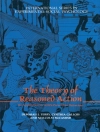Posttraumatic stress disorder (PTSD) is one of the signature injuries of the U.S. conflicts in Afghanistan and Iraq, but it affects veterans of all eras. It is estimated that 7-20% of service members and veterans who served in Operation Enduring Freedom and Operation Iraqi Freedom may have the disorder. PTSD is characterized by a combination of mental health symptoms – re-experiencing of a traumatic event, avoidance of trauma-associated stimuli, adverse alterations in thoughts and mood, and hyperarousal – that last at least 1 month and impair functioning. PTSD can be lifelong and pervade all aspects of a service member’s or veteran’s life, including mental and physical health, family and social relationships, and employment. It is often concurrent with other health problems, such as depression, traumatic brain injury, chronic pain, substance abuse disorder, and intimate partner violence.The Department of Defense (Do D) and the Department of Veterans Affairs (VA) provide a spectrum of programs and services to screen for, diagnose, treat for, and rehabilitate service members and veterans who have or are at risk for PTSD. The 2010 National Defense Authorization Act asked the Institute of Medicine to assess those PTSD programs and services in two phases. The Phase 1 study, Treatment for Posttraumatic Stress Disorder in Military and Veteran Populations: Initial Assessment, focused on data gathering. Treatment for Posttraumatic Stress Disorder in Military and Veteran Populations Final Assessment is the report of the second phase of the study. This report analyzes the data received in Phase 1 specifically to determine the rates of success for each program or method.Treatment for Posttraumatic Stress Disorder in Military and Veteran Populations Final Assessment considers what a successful PTSD management system is and whether and how such a system is being implemented by Do D and VA. This includes an assessment of what care is given and to whom, how effectiveness is measured, what types of mental health care providers are available, what influences whether a service member or veteran seeks care, and what are the costs associated with that care. This report focuses on the opportunities and challenges that Do D and VA face in developing, implementing, and evaluating services and programs in the context of achieving a high-performing system to care for service members and veterans who have PTSD. The report also identifies where gaps or new emphases might be addressed to improve prevention of, screening for, diagnosis of, and treatment and rehabilitation for the disorder. The findings and recommendations of Treatment for Posttraumatic Stress Disorder in Military and Veteran Populations: Final Assessment will encourage Do D and VA to increase their efforts in moving toward a high-performing, comprehensive, integrated PTSD management strategy that addresses the needs of current and future service members, veterans, and their families.
Board on the Health of Select Populations & Committee on the Assessment of Ongoing Efforts in the Treatment of Posttraumatic Stress Disorder
Treatment for Posttraumatic Stress Disorder in Military and Veteran Populations [PDF ebook]
Final Assessment
Treatment for Posttraumatic Stress Disorder in Military and Veteran Populations [PDF ebook]
Final Assessment
Beli ebook ini dan dapatkan 1 lagi GRATIS!
Bahasa Inggris ● Format PDF ● Halaman 300 ● ISBN 9780309301749 ● Penerbit National Academies Press ● Diterbitkan 2014 ● Diunduh 3 kali ● Mata uang EUR ● ID 7144472 ● Perlindungan salinan Adobe DRM
Membutuhkan pembaca ebook yang mampu DRM












